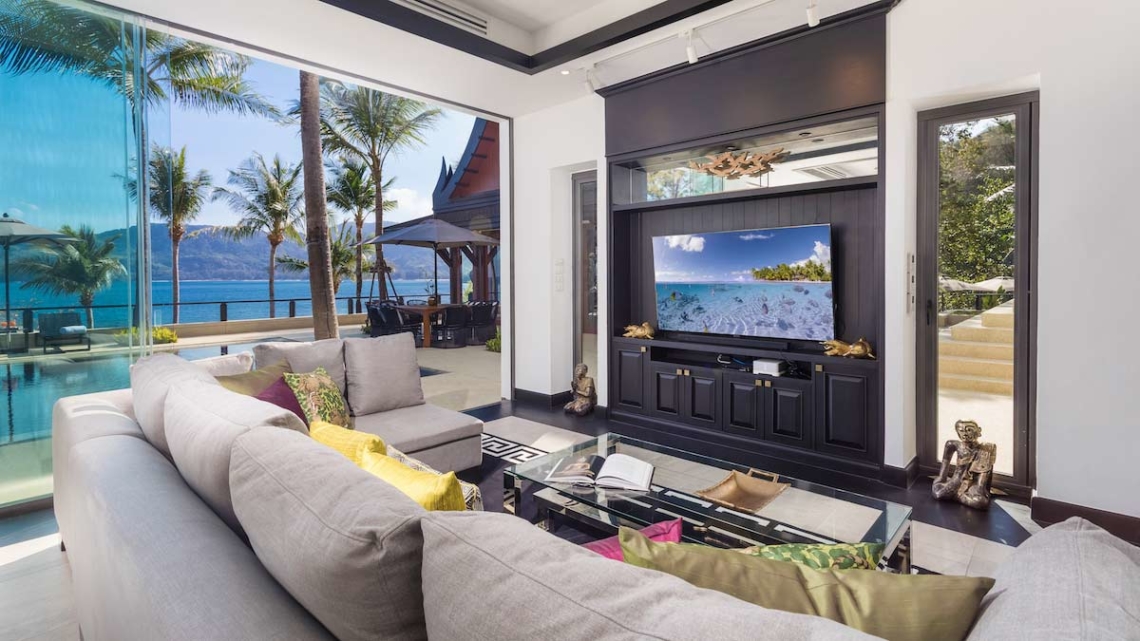Art and decor play an essential role in a villa’s overall sensory experience. It sets the tone and enhances the mood that is subsequently conveyed to its guests.
The effective use of these elements carries the design language and motif of a property, complementing and highlighting its architecture. When purposeful pieces of art and decor are introduced into a villa, it melds with the architecture and helps the home establish its own unique character and identity.
In Villa Purissara in Kamala, Phuket, there is a Zen-like calm and grandeur that flows all throughout the property. This serenity is owed much to the immediate splendor of its natural backdrop, but also to its aesthetics – making the vacation home a fitting inclusion as one of the best luxury private villas in Phuket.
The villa is adorned with multiple art pieces spread across its grounds and interiors. These ornaments, tapestries, and sculptures are deeply rooted in ancient and traditional Thai customs; depicting and symbolizing various representations of Buddhist beliefs – a prime example of how meaningful cultural art and decor can be brought into a modern-day villa.
A pair of Thai guardian lion statues
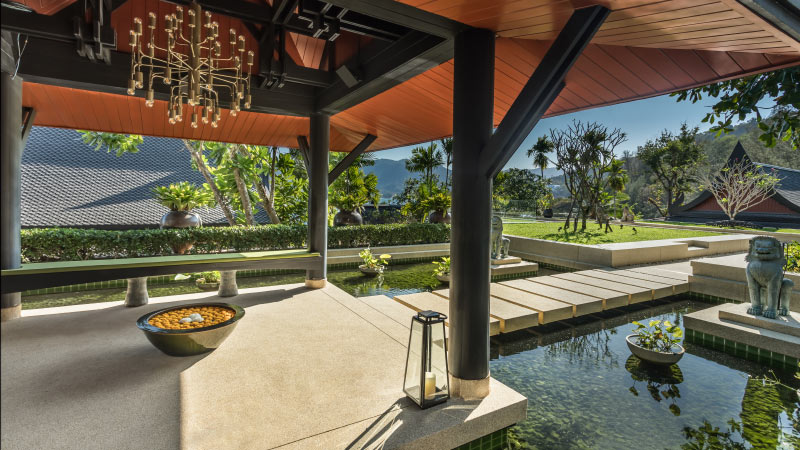
Just a few steps from the pavilion entrance, two lion statues stand valiant on either side of a bridge that leads to the main grounds. An enduring notion of lions across history is that they symbolize courage, royalty, and strength. In ancient Khmer, guardian lion figures were emblematic of their kings who were revered as godly beings. Magnificent carvings of these beasts stationed on temple terraces and staircases heading to shrines with the belief that they could fend off evil by wielding divine and regal safekeeping. Purissara’s stone lions are a reassuring presence as they hail each visitor upon arrival.
Prince Aphai sculpture
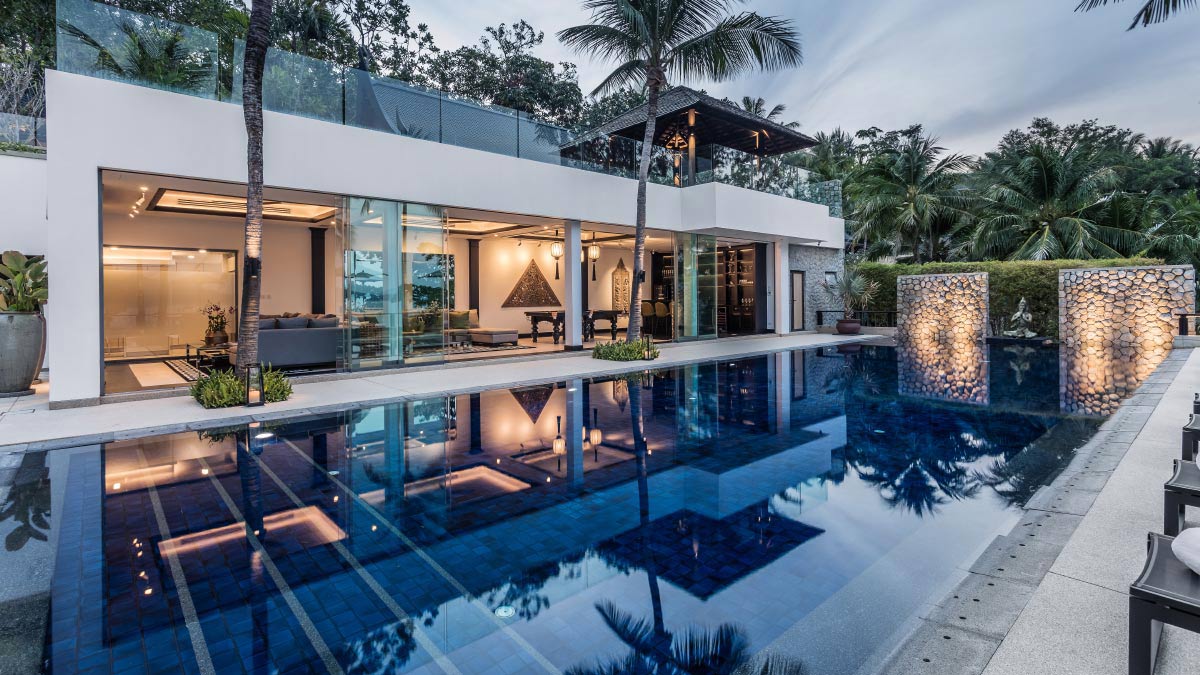
Simultaneously, charming Purissara’s pool and gardens is a sculpture of the infamous Prince, Phra Aphai, the eponymous flutist and hero of Thailand’s epic poem and national treasure, Phra Aphai Mani, by Sunthorn Phu. The poetic narrative is full of larger-than-life journeys relating to fantasy, romance, and valor. The Royal and beloved poet dubbed “The Bard Rattanakosin”, wrote the particular masterpiece for twenty-two years, extending to 48,700 lines – the longest Thai single poem. Painted in green patina, the sculpture is undoubtedly a striking, lively addition for the benefit of its ever-distinguished guests who wish to enjoy the generous, open-air spaces.
Shariputra and Maudgalyayana figurines
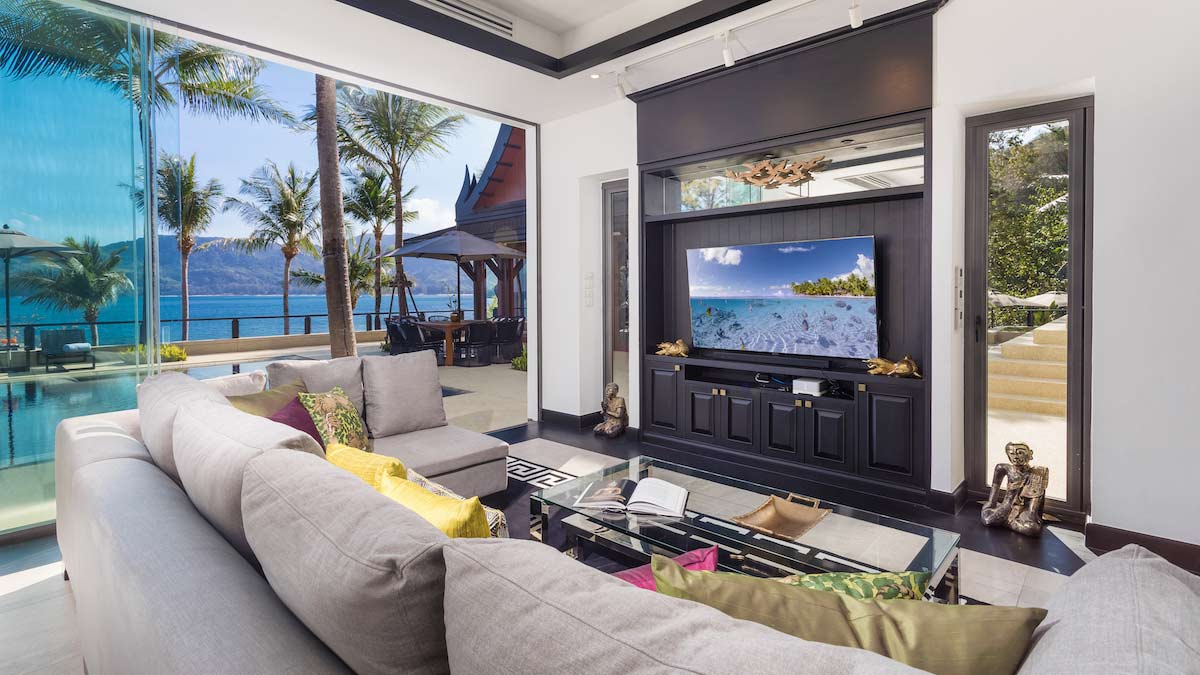
Continuing indoors, into the pleasantly bright living room, the figures of long-time friends Shariputra and Maudgalyayana sit in prayerful meditation as sunlight lends a gentle glow through the panes. It is believed that Buddha’s two well-known disciples started as spiritual wanderers seeking truth during their younger years. When they finally met the enlightened teacher, they were ordained as monks and were acknowledged as chief disciples, aiding in instructing others. In the villa, a few other monk figurines are set in other rooms as well.
A pair of Buddha head sculptures
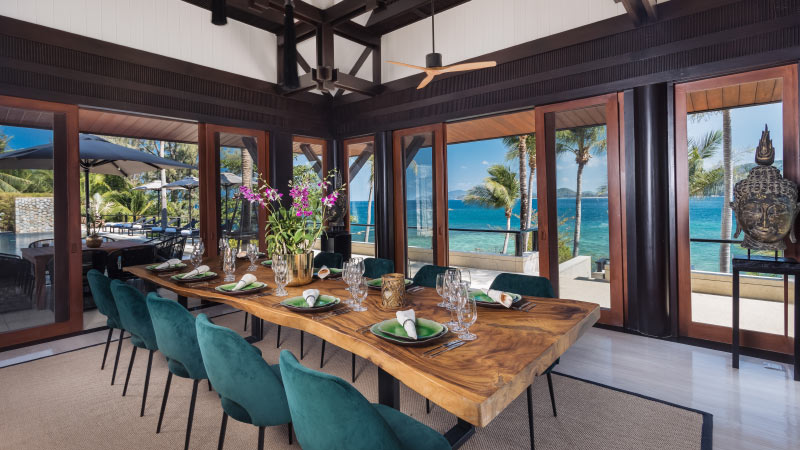
In the dining room where guests love to gather, two, large, polished Buddha head sculptures frame each corner of the glass doors that reveal the Andaman Sea. Much like the various mudras in Buddha statues that convey different meanings, Buddha heads hold symbolic features that encourage reflection to the observer. The Ushnisha, for instance, a large oval gathering of infinite curls occasionally crowned by a flower or flame as in Villa Purissara’s dining area, represents the true light of wisdom. Meanwhile, the gentle beam of the mouth alludes to Buddha’s enlightened nature, harmonious and tranquil, to which the room hopes to echo.
Tapestry of elephants
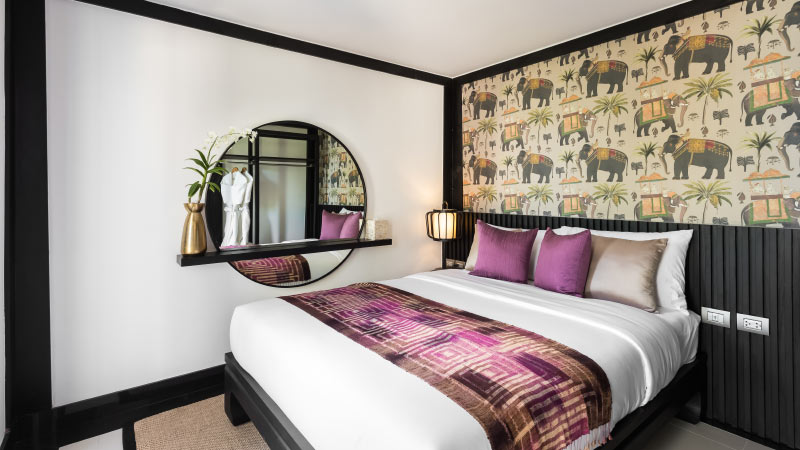
Art continues in every other luxurious Purissara bedroom. The family room, for example, holds a tapestry of traditionally garbed elephants just above the headboard, mirroring The Thai’s penchant for embellishing palaces and temples with artwork relating to these beautiful giants. Tender yet mighty and accommodating, these creatures have always been revered as sacred animals and are very much weaved into national history and Buddhist religion, earning a position in Thailand’s royal and cultural iconography.
Two golden fish ornaments
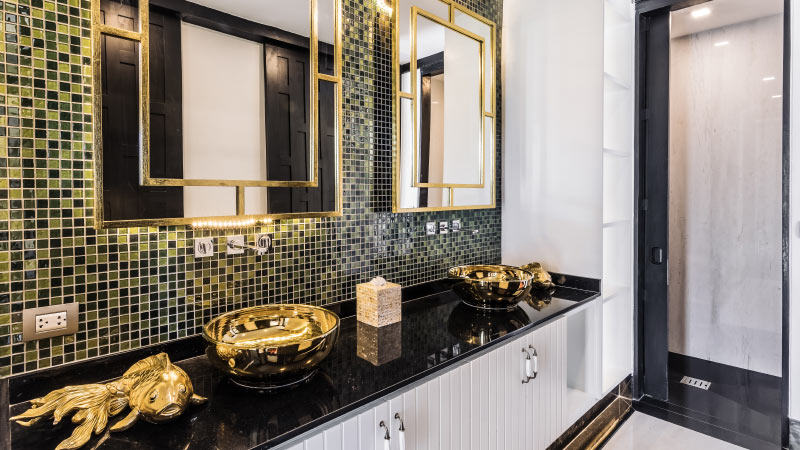
Moving on to one of the guest bathrooms, a pair of cheerful-looking golden fish add playful movement to the posh black and white motif. While fish may have several symbolical meanings, they are always considered a good omen. In Buddhism, fish speak of freedom. There is an idea that one can only be truly happy and at peace when untethered, as fish are in the water. Primarily, twin fish represented the two sacred rivers in India, which in turn, denoted prosperity or good fortune in life as well as life itself, depicting man’s breathing channels with their constant rhythm of taking air in and out. The inseparable fish also point to creation and fertility due to their speedy ability to generate offspring, and of course, unity and harmony, whether within one’s self— balancing out emotions with intellect— or with others.
Tapestry of the Bodhi Tree, a pair of Chofas and a mounted carved centerpiece
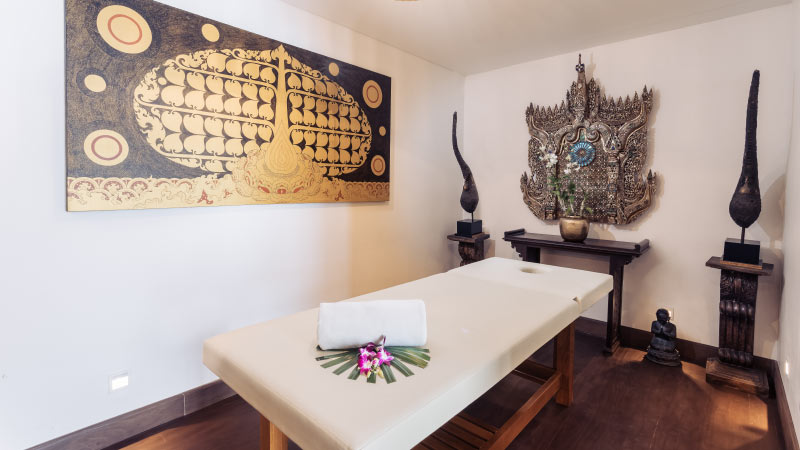
Finally, inside the quiet, soothing Spa room, there is an image of an extraordinary fig tree symbolizing wisdom, enlightenment, and freedom. The Golden Bodhi tree, typically known as a banyan tree, was witness to Prince Siddhartha Gautama’s spiritual transformation after 49 days of unceasing meditation. Beneath its shade, Siddhartha achieved enlightenment. With that, he relieved himself of his earthly title and became Buddha. The tree is now known as “the tree of awakening.”
On the shorter wall of the Spa room, a pair of simple chofas top ornate, wooden pedestals. Customarily, they are of architectural use. These finials called ‘sky tassels’ decorate roofs of temple compounds and palaces. These hornlike ornaments resemble tall, thin birds, embodying Garuda, a mythical creature, part-man, part-bird, that serves as the Hindu god Vishnu’s medium of travel.
In between these sky tassels is an elaborate, mounted centerpiece. The complicated carvings and patterns make it appear like a reclaimed piece from a Buddhist Wat, and are reminiscent of temple and palace doors. Interestingly, the Thai’s temple doors display one of the most exquisite designs in Thai architecture. These fascinating entryways sometimes had sculpted images of guardian figures over intricate backgrounds for they were characteristically seen as passages that would lead to other realms. For guests engaged in a wellness session, the tree, chofas, and centerpiece inspire a shift, leaving the present for a relaxing ascent into a more superior disposition.
There are many more remarkable things to be explored in Villa Purissara. The villa has truly taken great lengths to create the wonderful atmosphere that it offers. Their choice of art is just one other element to express their desire to please and say with poised conviction: you are in for a sublime stay.


